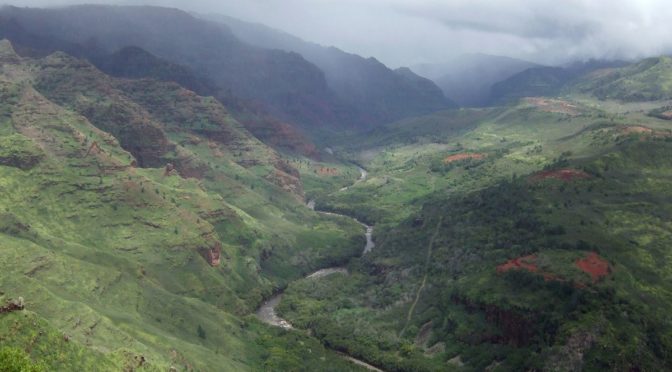Several experts have come out saying many of the recommendations made by a fact-finding group that studied potential pesticide hazards on the west side of Kaua‘i last year are likely not needed.
And then there was an editorial saying just that in yesterday’s Hawaii Star-Advertiser:
Editorial| Our View
Don’t overreact to pesticide study
June 9, 2016
A fact-finding mission to determine whether pesticides used by large agricultural operations on the west side of Kauai cause harm to humans and the environment found no smoking gun. So it would be difficult to justify spending millions of taxpayer dollars to implement all 28 of the panel’s policy recommendations….
And a news story from the Star-Advertiser last week:
State officials, experts question the practicality of group’s pesticide report
By Sophie Cocke, June 5, 2016
State regulators and experts in the fields of health and environmental science say that many of the recommendations put forward by a joint fact-finding group convened to study the potential hazards of pesticide use by large agricultural operations on the west side of Kauai likely aren’t useful, would cost millions of dollars annually and in some cases exceed state resources and expertise.
The study group, originally composed of nine Kauai residents with diverse backgrounds, and facilitated by mediation specialist Peter Adler of consulting company ACCORD3.0 Network, spent months sifting through scientific research and health data to evaluate whether there is any indication that pesticide use on the west side of Kauai is harming the environment or human health….
The report, released last week, found no evidence that pesticides are making people sick on Kaua‘i or posing any significant environmental risk. However, it put forth 28 recommendations for continued monitoring and studies.
Peter Adler, who spearheaded that fact-finding group last year, spoke to us at the Department of Agriculture on Tuesday and afterwards, people in the audience spoke up. Two of three people who resigned in protest from that fact-finding group were present and said they did not think the fact-finding was fair or justified. They thought it was one-sided, which is why they resigned from the group. They were very persuasive.
Then on Sunday, Bruce Anderson, formerly the director of the Department of Ag and now administrator for the Department of Land and Natural Resources’ Divison of Aquatic Resources, was quoted about this in the above Star-Advertiser article.
He said he does not agree that the huge expense and efforts are needed. He pointed out that the recommended monitoring would likely cost millions of dollars per year. I find Bruce very credible.
“The bottom line was that there were no problems found,” he said, “and it is hard to justify the extraordinary expense involved in long-term monitoring of air, water and other exposures to pesticides. There is nothing really unique about the west side of Kauai. It’s an agricultural area, pretty much the same as other agricultural areas.”
I come to the same conclusions as Bruce.
Last summer, several of us from the Department of Agriculture went to Kaua‘i to see how the seed companies were performing under their voluntary “Good Neighbor” policy. This is a policy where they voluntary refrained from spraying close to hospitals and schools, etc.
We met with some of the large seed companies, and the senior level executives spoke, then the mid-level people, but I didn’t just listen to the bosses. I listened to the folks on the ground who were implementing that policy, and asked them questions, and found that their answers supported what the bosses said.
It seemed to me that the Good Neighbor Policy was very reasonable, and the way they were carrying it out seemed to make a lot of sense from a farmers’ point of view. Frankly, I came to the conclusion that it seemed like a very good program.

